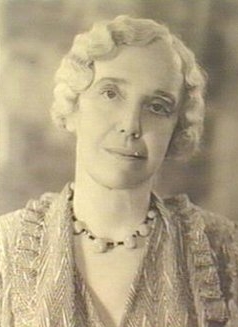Kate Cocks
Fanny Kate Boadicea Cocks, the daughter of Anthony, a
Cornish miner, and Elizabeth nee George was born at Moonta
on 5 May 1875.
Cocks trained as a teacher and took up a position with
the South Australian Education Department and taught at
several schools.
She joined the State Childrens Department
as a teacher and worked at the Edwardstown
Industrial School as the Assistant Matron. The current
subdivision of Windana Mews (see foot of this page) along
with the Glandore Community Centre now occupy the land
previously occupied by the Edwardstown
Industrial School.
Her work with the disadvantaged children led to a position
with the Juvenile Courts as the very first probation officer.
 In
1915 the Government decided to address the issues of women
and youth with the creation of women police officers
and Kate was appointed to head the section with the rank
of Principal Police Matron and took office on 1 December
1915 becoming the first woman
police
officer
anywhere in the then British
Empire. In
1915 the Government decided to address the issues of women
and youth with the creation of women police officers
and Kate was appointed to head the section with the rank
of Principal Police Matron and took office on 1 December
1915 becoming the first woman
police
officer
anywhere in the then British
Empire.
The Women Police Office at 9 Landrowna Terrace was located
on the south eastern corner of Victoria Square, occupying
the ground floor, rented for ten shillings per week, was
furnished with a table, three chairs, a sideboard with
drawers, two pens and a large quantity of ink in
a whisky bottle. Kate believed that a uniform would be
a disadvantage in the type of work
envisaged for the women police. Their kit consisted of a police whistle, baton
and identification card. No formal training was given and
their knowledge of the law was gained through experience
or reading law books in off duty hours.
When
she retired in May 1935 women police were a recognised
feature of policing in the interests of women and youth.
Despite Kate's appointment being on the principle of same
pay, same conditions and powers
of a male officer, in reality the
concept of women officers being involved in general policing
had yet to occur. This was largely the result of Kate's
own emphasis on the work she saw as important rather than
initial government policy.
Retirement saw Kate establish
with the help of the Methodist Church, a home at Brighton
for young unmarried mothers
to be. The home did not offer confinement facilities. It
is said that Kate would loan her mothers wedding ring to
each girl so that
she would not appear to other new mothers to be unmarried
when admitted to hospital for her confinement!
Kate Cocks who never married, died 20 August 1954
and was buried in the Payneham Cemetery. The home at Brighton
was a beneficiary of Kate Cocks' Will and the home was
renamed in her honour.
|